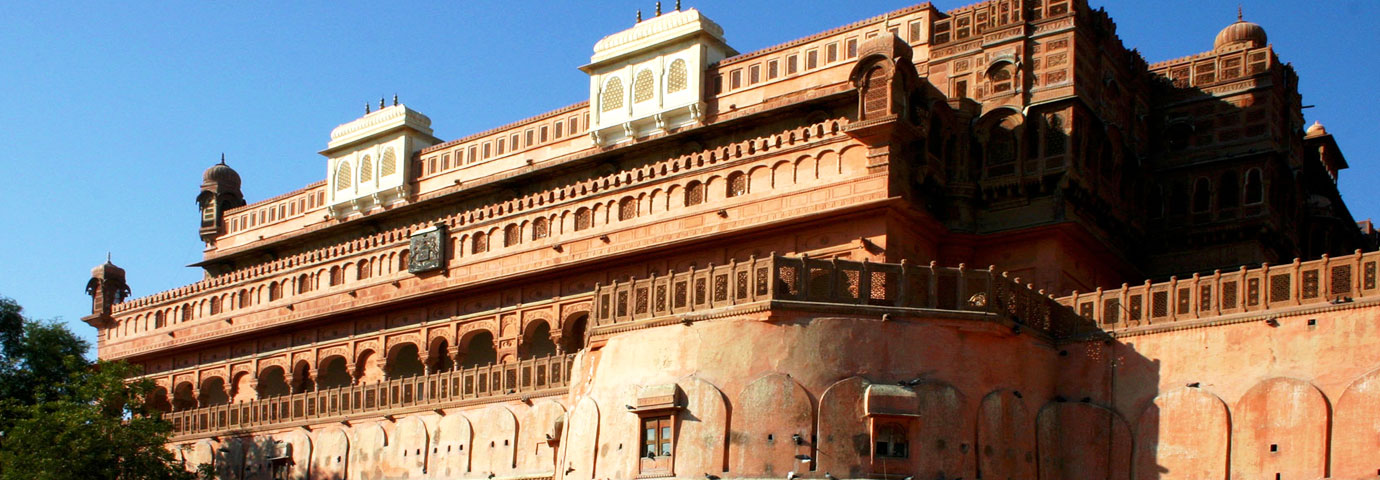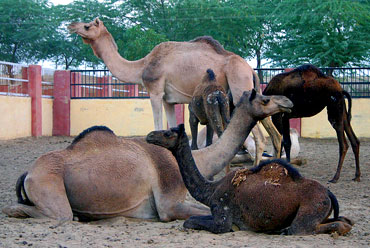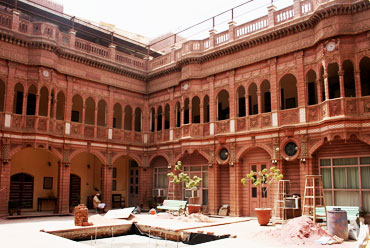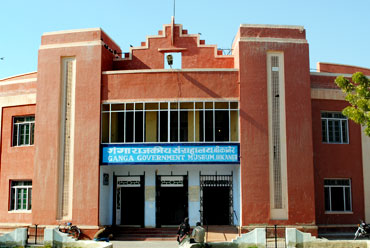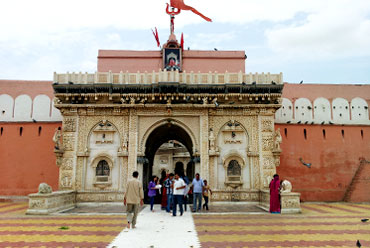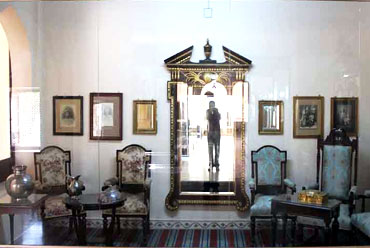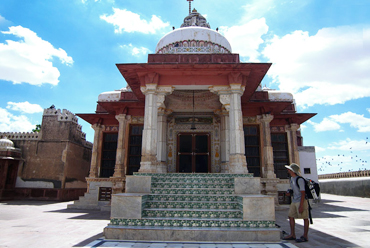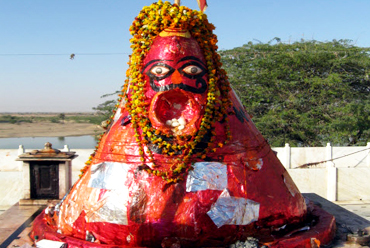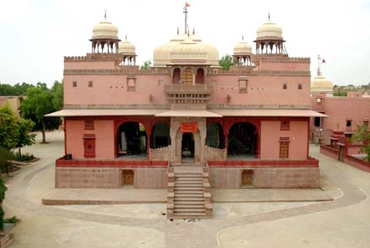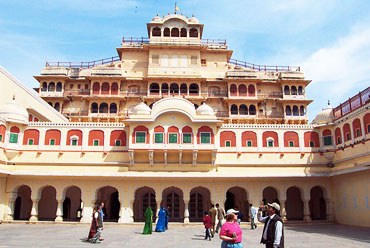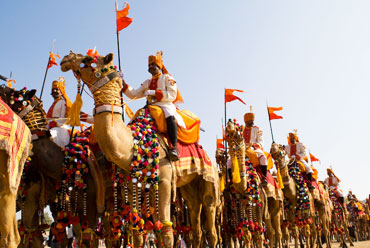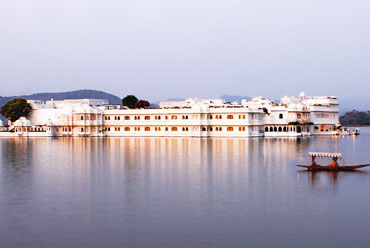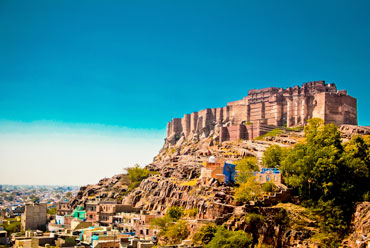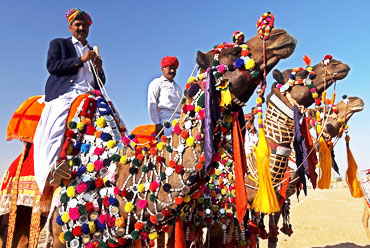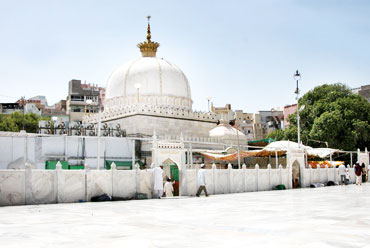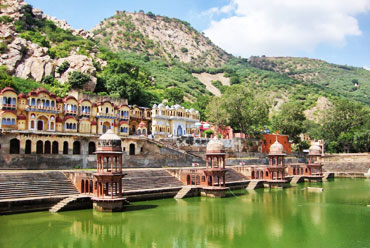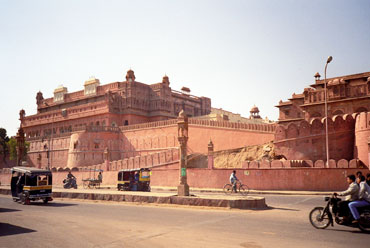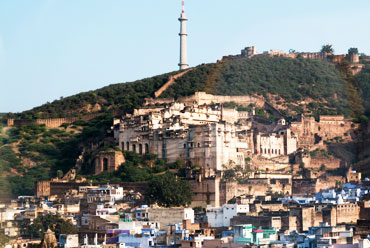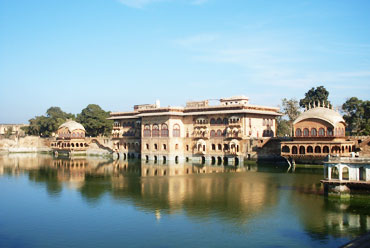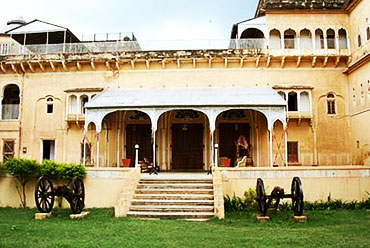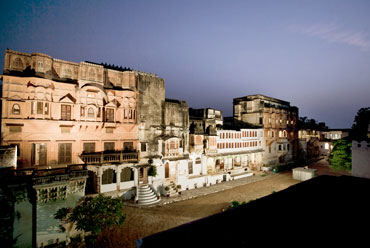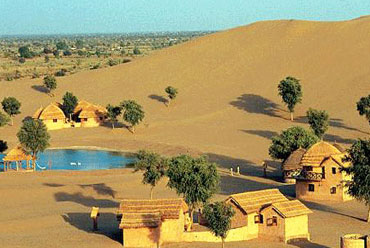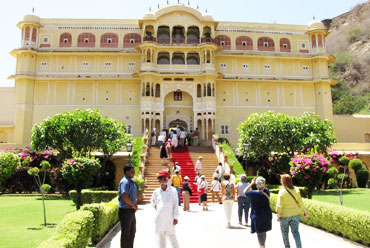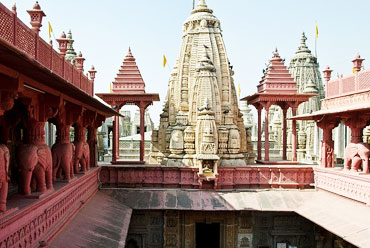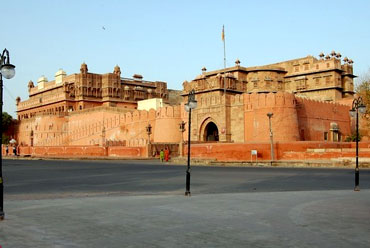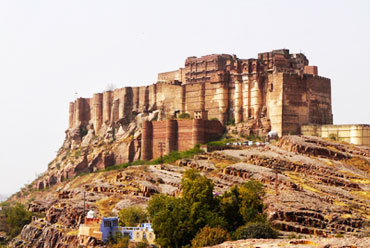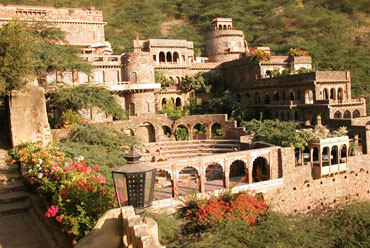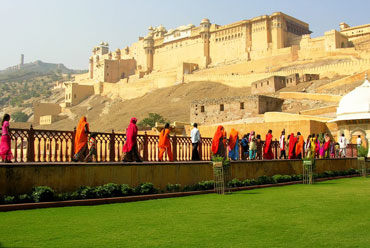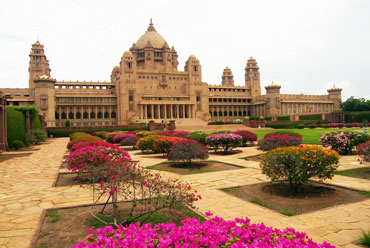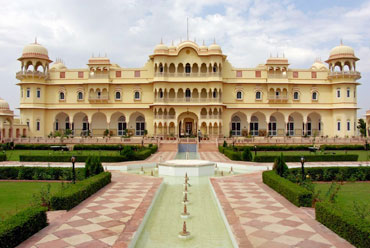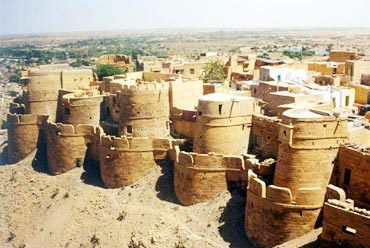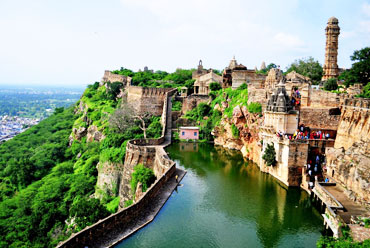Timings: 10:00 AM to 04.30 PM (Closed on Sunday)
Timings of the Museum
09:00 AM to 6:00 PM (everyday)
Entry fee:
Museum: INR 50
Ordinary camera: INR 30
Movie Camera: INR 100
Fascinating and impressive, Junagarh fort is one of the most popular attractions in Bikaner, boasting a historical and structural magnificence. It is one of the impregnable forts in Rajasthan. It was attacked a number of times in the due course of history but was never conquered. Spread in an area of 5.28 hectares of an area, this fort complex has temples, palaces, and huge pavilions.
The fascinating Junagarh fort was constructed by Raja Rai Singh, between 1588 -1593 AD. He was the sixth ruler of Binaker who ruled here from 1571 to 1611 AD. The supervision of the construction of the fort complex was done by Karan Chand, Raja Rai Singh’s Prime Minister. The construction of Junagarh fort had started on 30th January 1589 and was completed on 17th February in the same year.
Architectural layout of Junagarh Fort
Bounded by a moat, Junagarh fort has an intimidating structure. The palace complex houses some wonderful structures in its boundaries. Palaces in marble and red sandstone make up for a wonderful collection of kiosks, windows, balconies and courtyards that look stunning.
Junagarh fort complex has two entrance and has a total of 986 long walls that have 37 bastions. There are a total of 37 palaces, along with a number of pavilions and temples. One of the highlights of the architecture of Junagarh fort is its stone carving with an excellent quality. Number of rooms of the palace have paintings and decorations that were done in traditional style.
Suraj Pol and Daulat Pol are two main gates of the fort. Suraj Pol or the sun gate was east facing and was the main gate of the fort complex. The historical Daulat Pol has the handprints of the royal ladies who had committed sati along with the pyres of their deceased husbands, at the Sati Stambh. Chand Pol, Karan Pol and Fatech Pol were the other inner gates.
The Zenana or the latest quarters are extremely lavish and are a display of unique artistic skill. While they royal ladies were an integral part of the household, they were not really a part of the matters of the state. They used carved stone screens for interaction with others. These screens can be seen displayed here. Do not miss noticing the mirror work, paintings, and lacquer work. The minarets, columns, arches and pavilions are gigantic and imposing.
Junagarh fort has other structures too:
Badal Mahal
Badal Mahal or the Palace of Clouds is known to have walls, which are adorned with beautiful fresco paintings, showcasing Lord Krishna and Goddess Radha, amid rain clouds.
Anup Mahal
Constructed as a multistoried structure, Anup Mahal was the governance chamber of the ruler. The rooms are beautifully maintained and are a display of the opulence of the royal family. The inner walls of the palace has exotic red and gold lacquer work, and glass inlay work. Gold leaves cover the white plaster pillars.
Chandra Mahal
Chandra Mahal or the Moon Palace has wonderfully carved marble panel, exquisite paintings and mirrors.
Other structures
Phool Mahal or Flower Palace uses glass and mirrors for decoration. Har Mandir was the main temple in the complex where the royal family came every day for worshipping their gods and goddesses. Karan Mahal was constructed as remembrance for the then ruler’s victory over the Mughal Emperor Aurangzeb. Do not miss other attractions of Junagarh fort like Dungar Niwas, Ganga Nivas, Gaj Mandir, Rang Mahal, Bijai Mahal of Rajasthan. While Durga Niwas is known for its splendid painted courtyard, Ganga Niwas of Rajasthan has a delicately carved red sandstone façade.
Prachina Museum
Located in the Junagarh fort complex, Prachina Museum was founded in the year 2000. The museum has a wonderful collection of jewelry, carpets, arms, weapons, arms, portraits, textiles, rare manuscripts, costumes, textiles, ‘Farmans’, decorative objects and treaties belonging to the royal family.
The museum has a separate section for Poshaks or costumers. It houses a rich collection of costumes, which are a wonderful display of workmanship of the artisans, with work like Zardozi, Badala and Kalabhut.
The museum has Mandir Gallery too with handmade poshak clothes, jewelry and mukuts (crowns) worn by the resident Goddess or the Kul Devi of the royal family. The portrait gallery has a number of black and white portraits of men and women in traditional costumes, miniature paintings as well as group photos of significant events.

